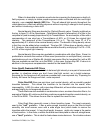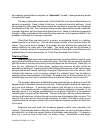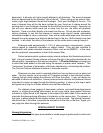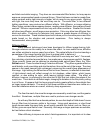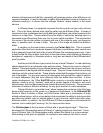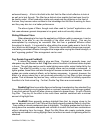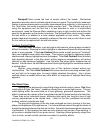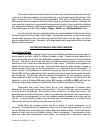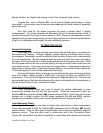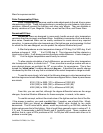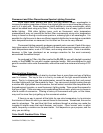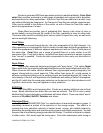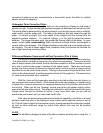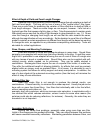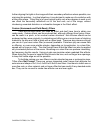
CAMERA FILTERS © Ira Tiffen
12
darken the blue, and lighten the orange; a blue filter will perform the reverse.
A green filter, such as Wratten #11, can be used to lighten green foliage, to show
more detail. It may also be used to provide more pleasing skin tones outdoors, especially
against blue sky.
Any filter used for the above purposes will have a greater effect if slightly
underexposed. Its function depends on absorbing light of its complementary colors to
increase the proportion of light of colors similar to itself. Exposure compensation is often
needed to allow proper image density, but the relative difference is reduced by the addition
of light at the absorbed wavelengths through additional exposure.
FILTERS FOR COLOR
General Information
Recording color involves knowing more about light sources than is necessary for
black-and-white imaging. Sunlight, daylight, exterior lighting at different times of day,
incandescent, fluorescent, as well as other artificial sources, all have color characteristics
that vary significantly. We see images through our eyes only after they are processed by
our brain, which has the ability to make certain adjustments to the way we see color. White
will still appear white to the eye in various lighting, so long as we don't have more than one
type visible at a time. Film has no such internal compensation. It is designed to see only a
certain type of light as white - all others will appear different to the extent of their difference.
Filters are required to provide the necessary fine-tuning.
Knowing that light is a form of energy, we can theoretically view it as energy emitted
from a hot object, usually termed a 'black body,' that gives off light as a function of its
temperature. The color of that light can be measured in degrees Kelvin (K). The normally
encountered types of light can be categorized by certain anticipated color temperatures, or
can be measured with a color temperature meter.
Color Conversion Filters
Color Conversion filters are used to correct for sizable differences in color
temperature between the film and the light source. These are comprised of both the
Wratten #80 (blue) and the Wratten #85 (amber) series of filters. Since they see frequent
outdoor use, in bright sunlight, the #85 series, especially the #85 and #85B, are also
available in combination with various neutral density filters for exposure control.
Light Balancing Filters
Light Balancing filters are used to make minor corrections in color temperature.
These are comprised of both the Wratten #81 (yellowish) and the Wratten #82 (bluish)
series of filters. They are often used in combination with various neutral density filters for
exposure control. They are often used in combination with Color Conversion filters.
Certain #81 series filters may also be available in combination with various neutral density



